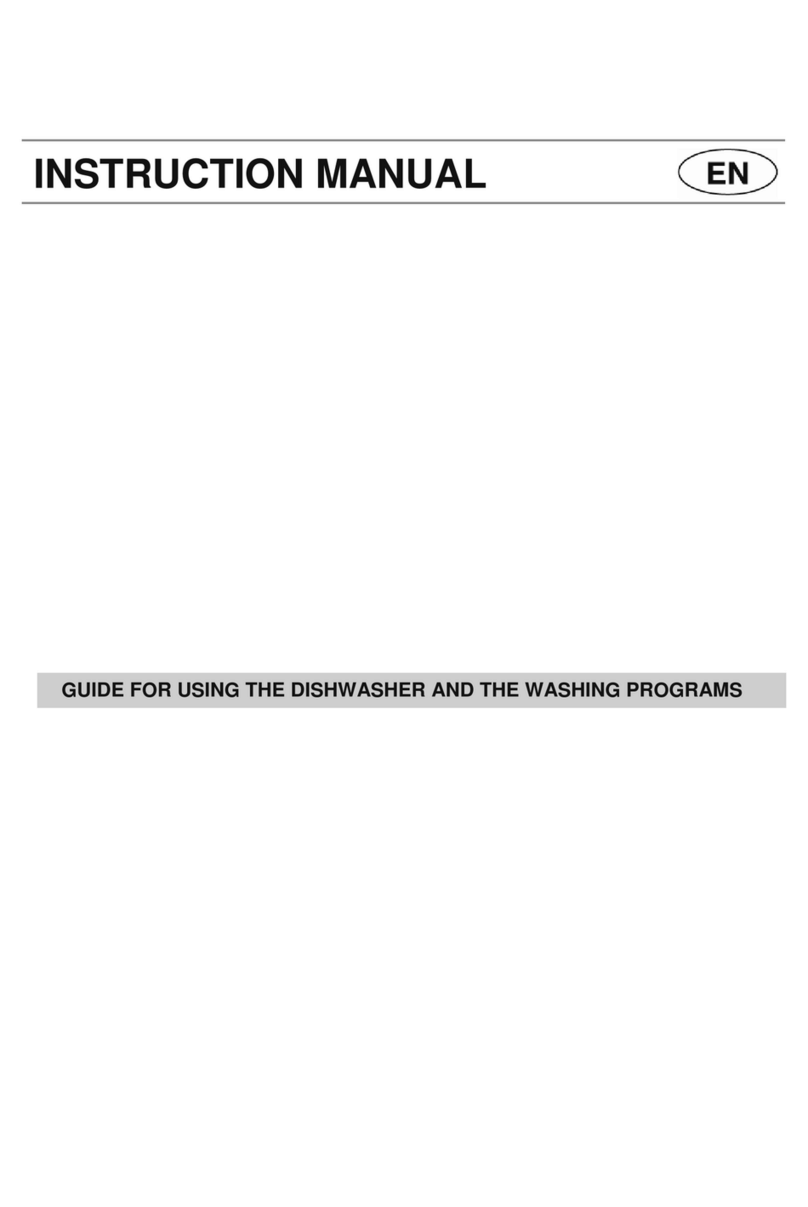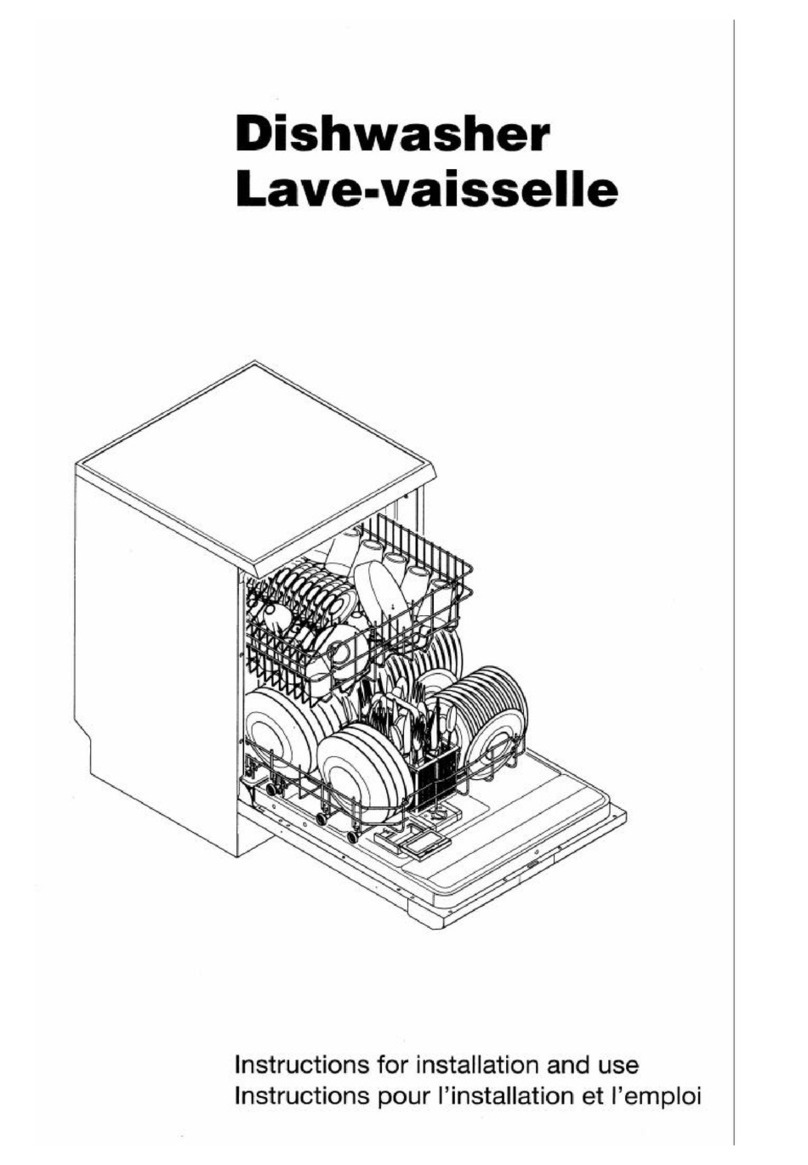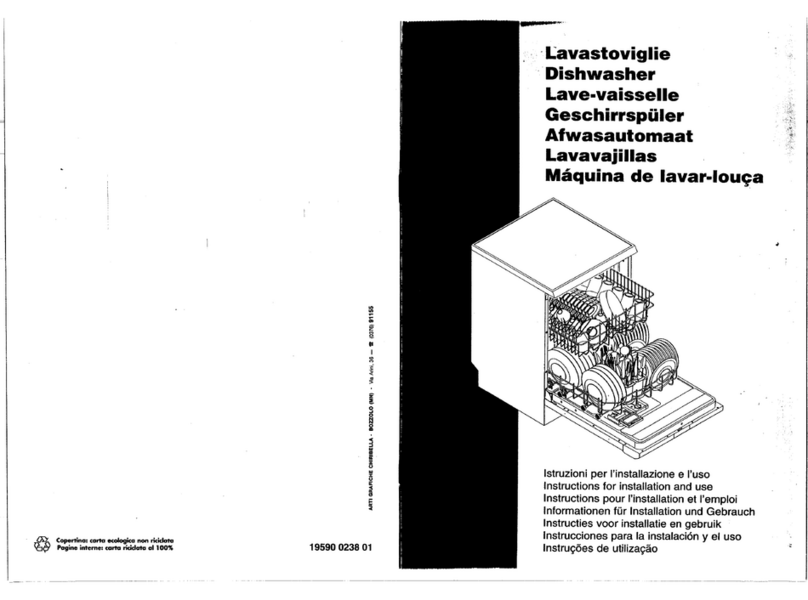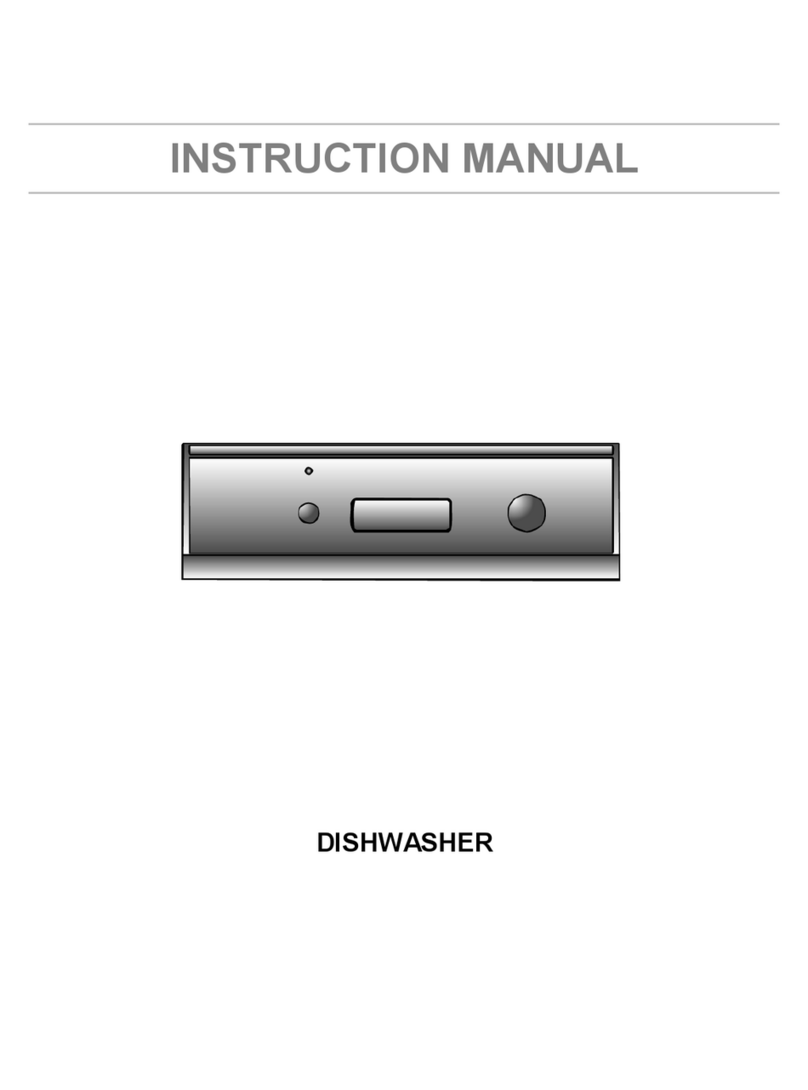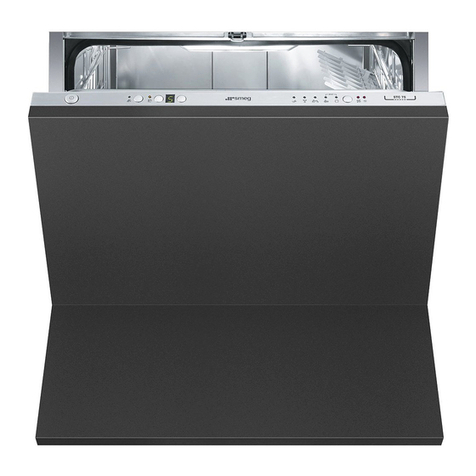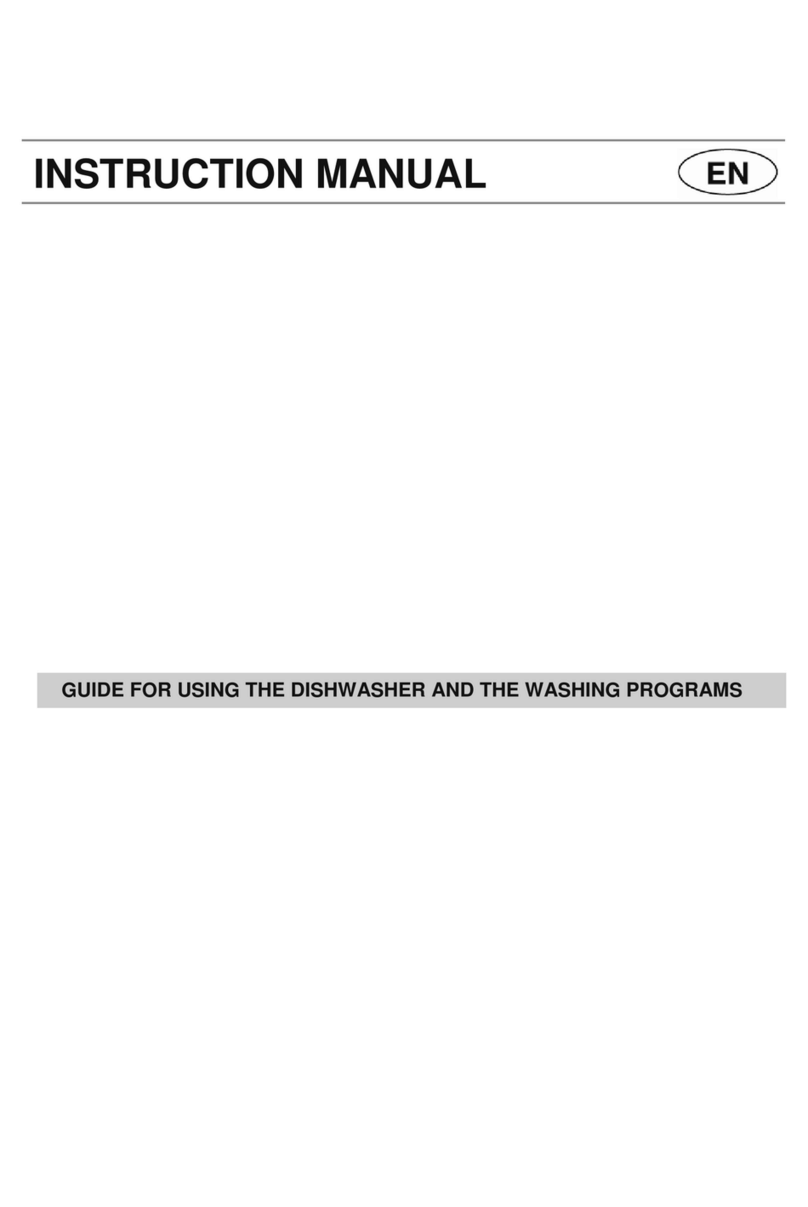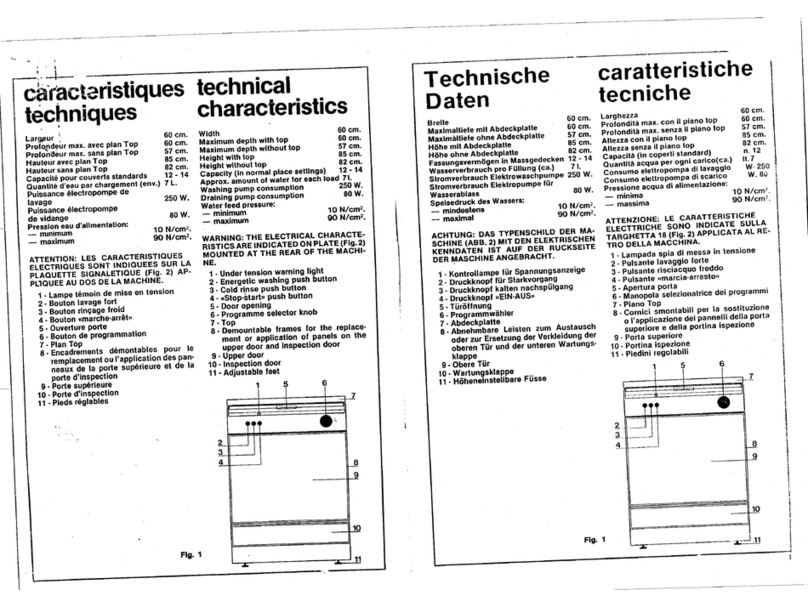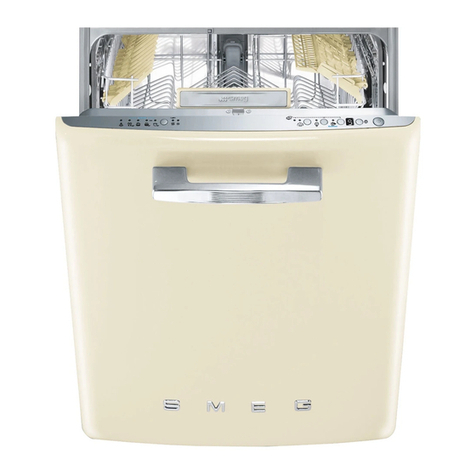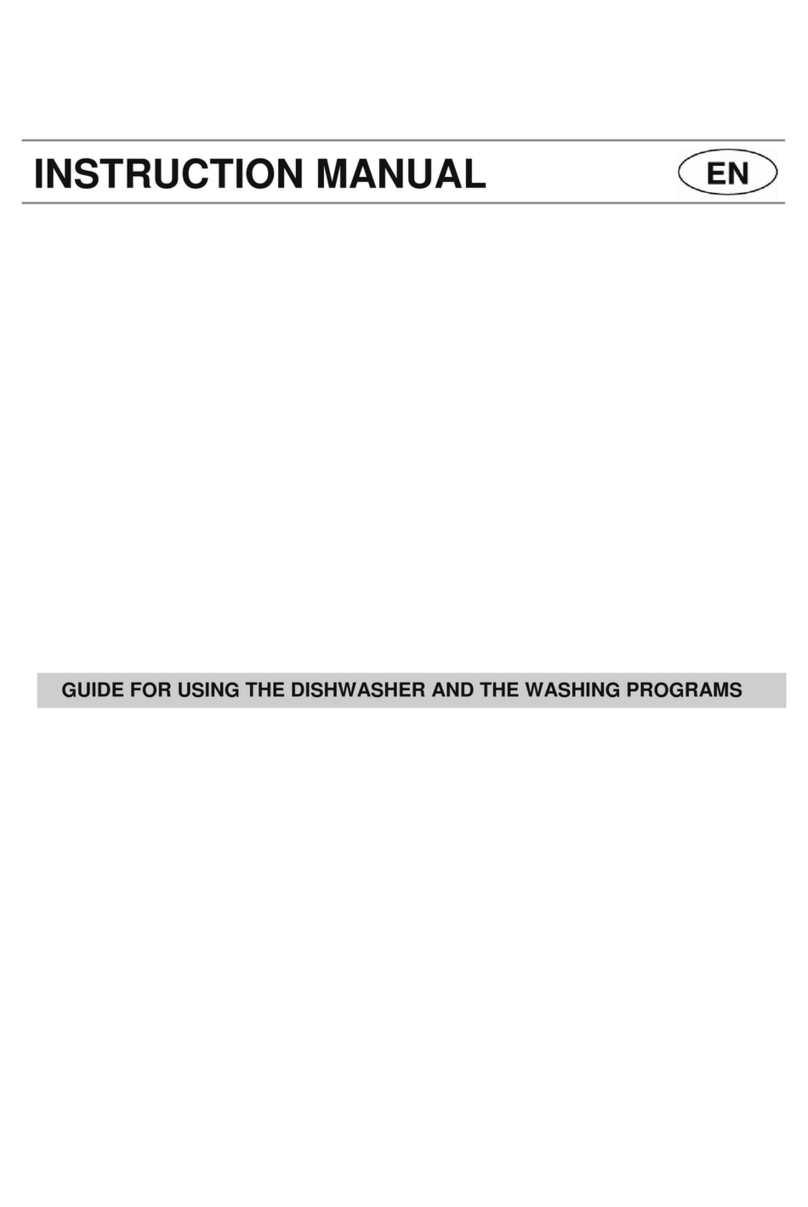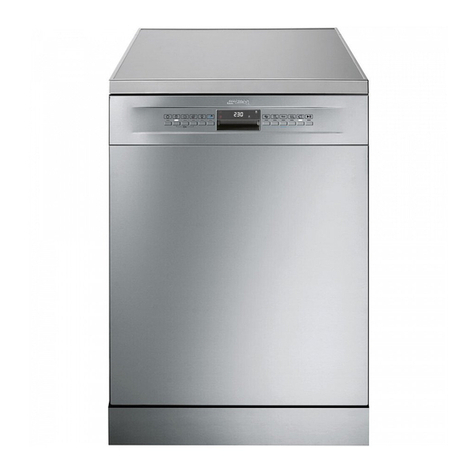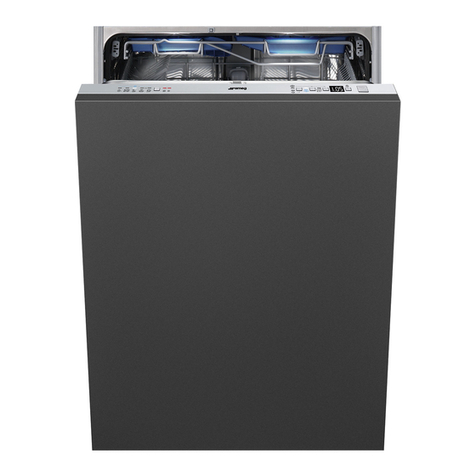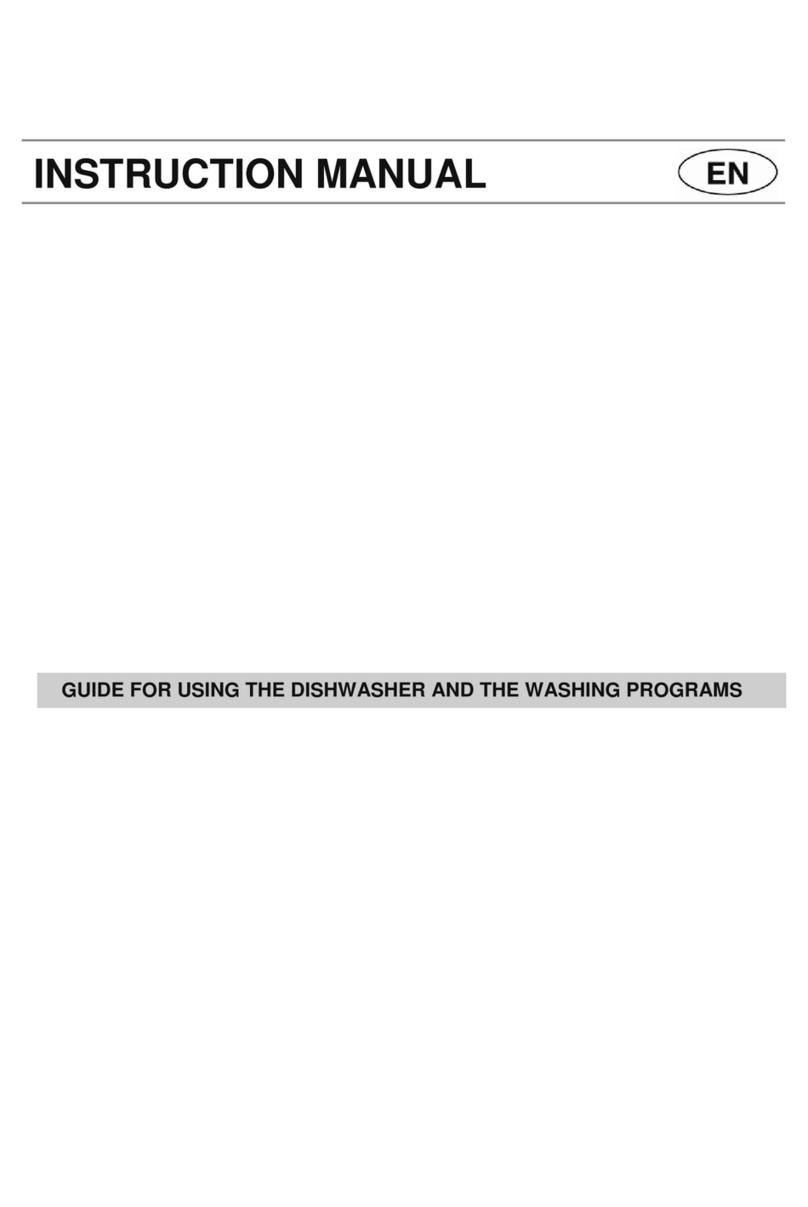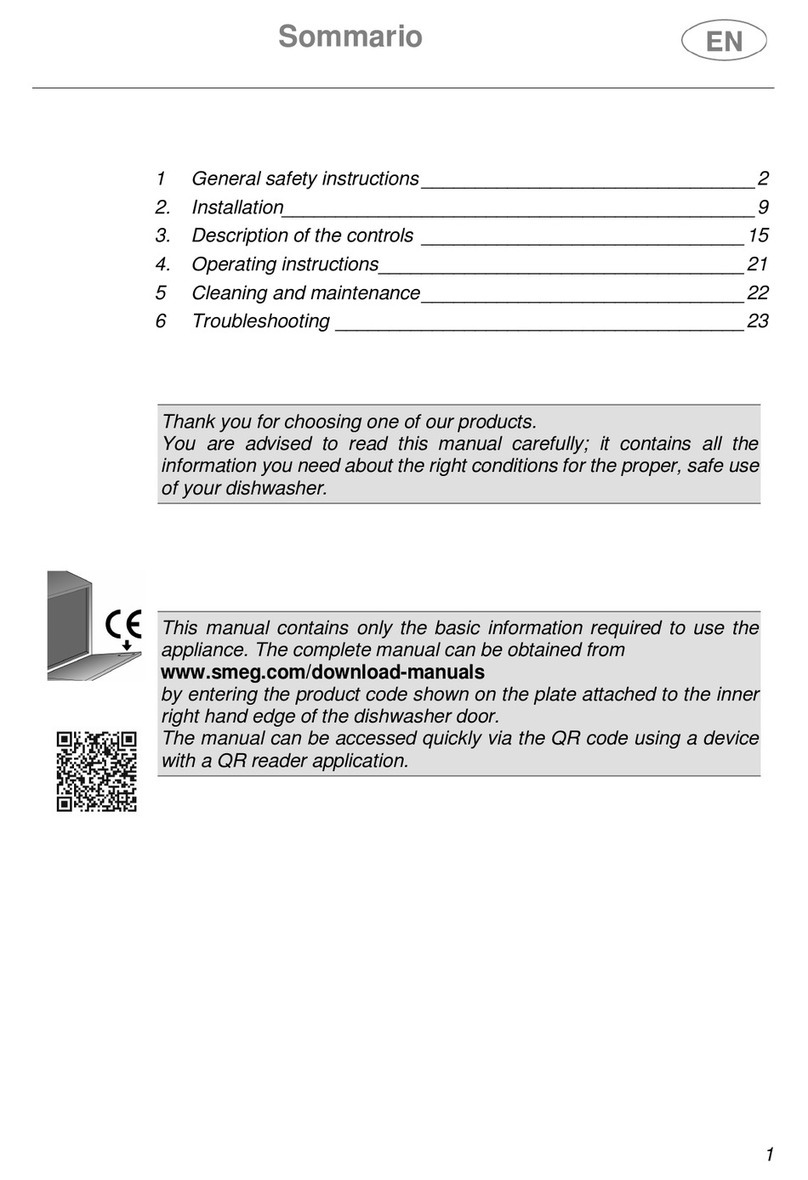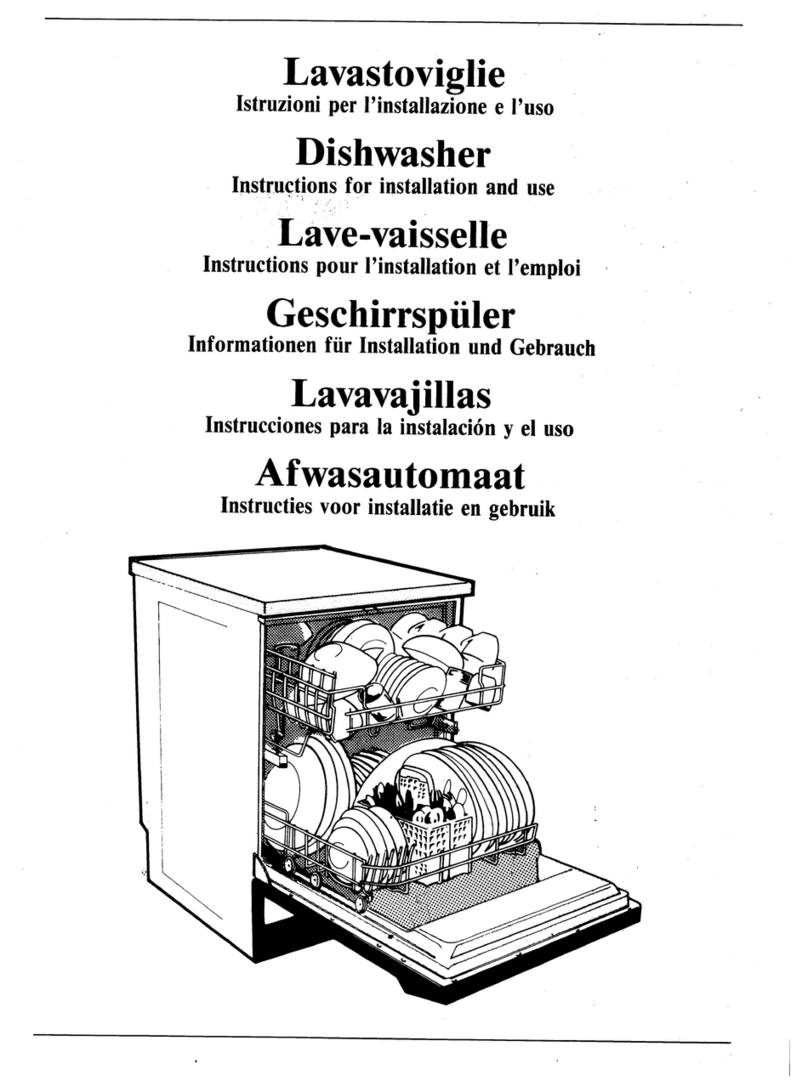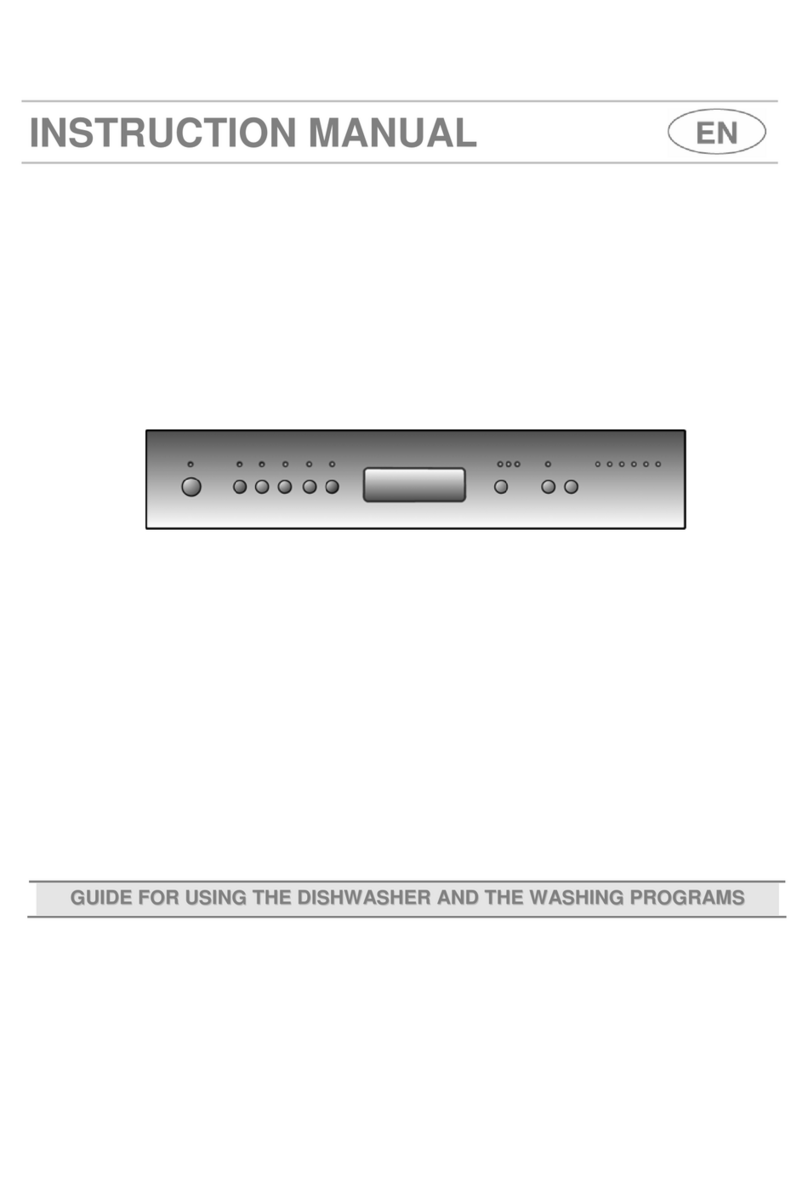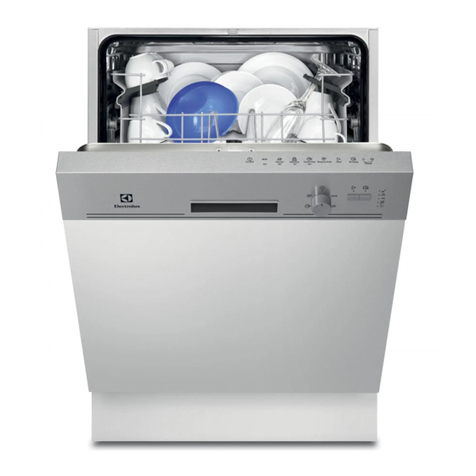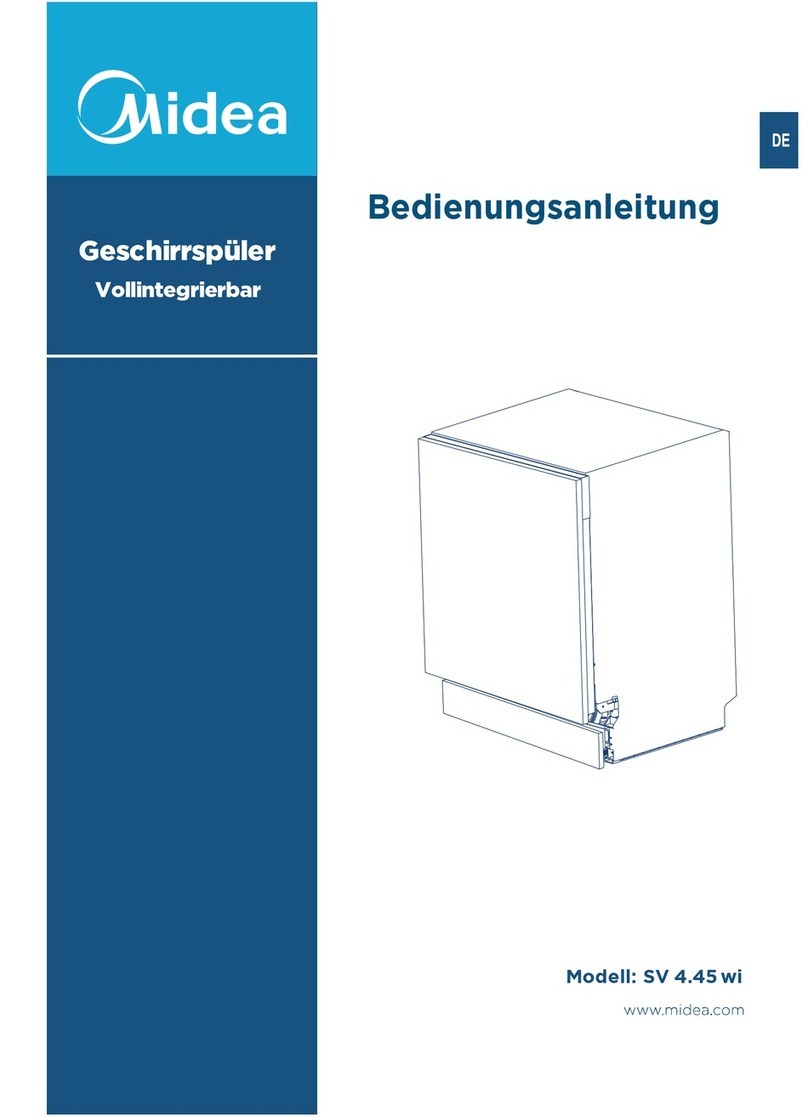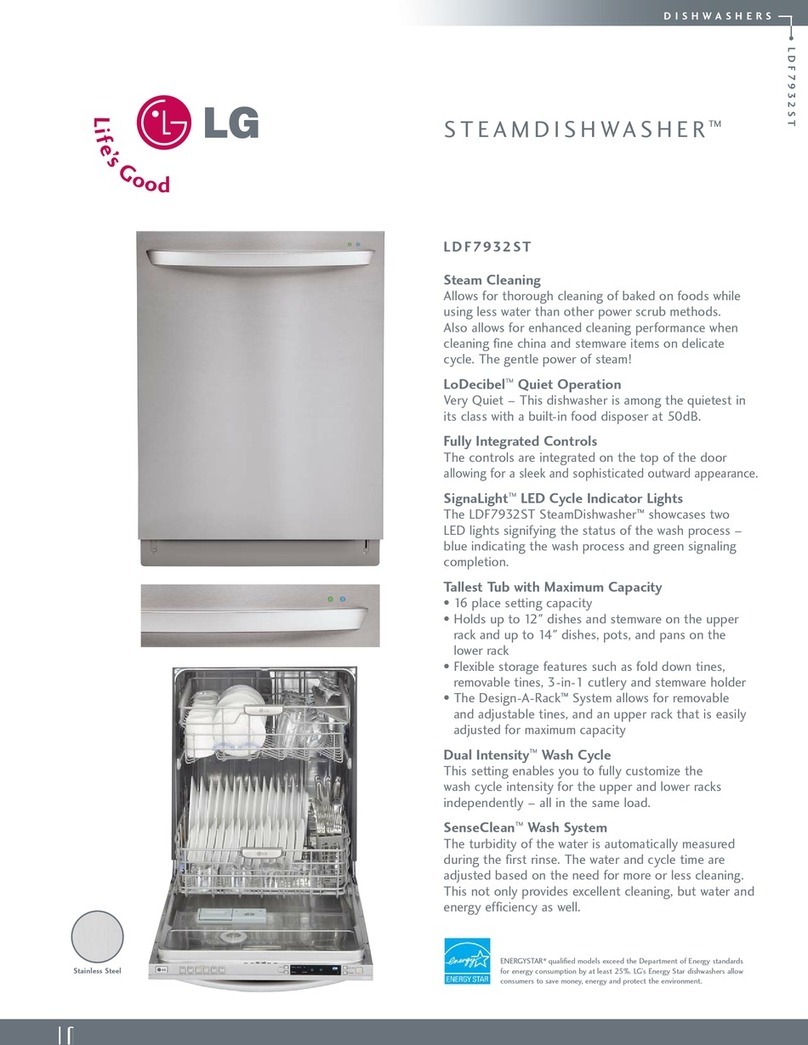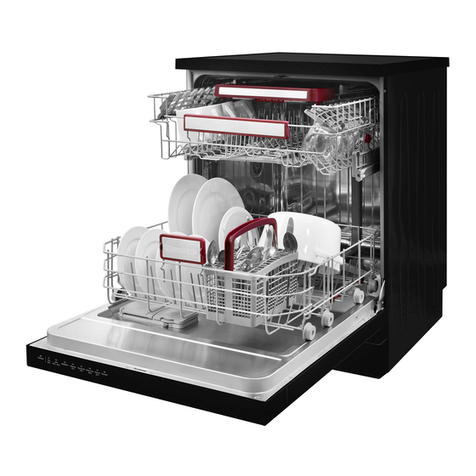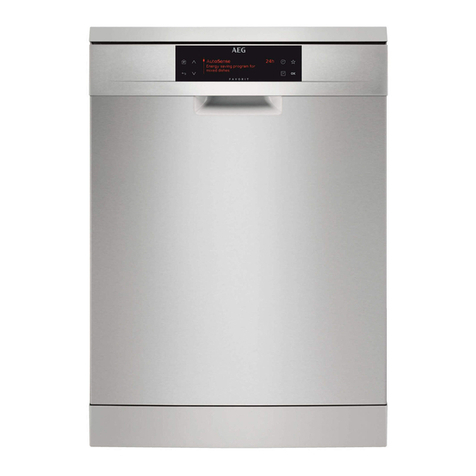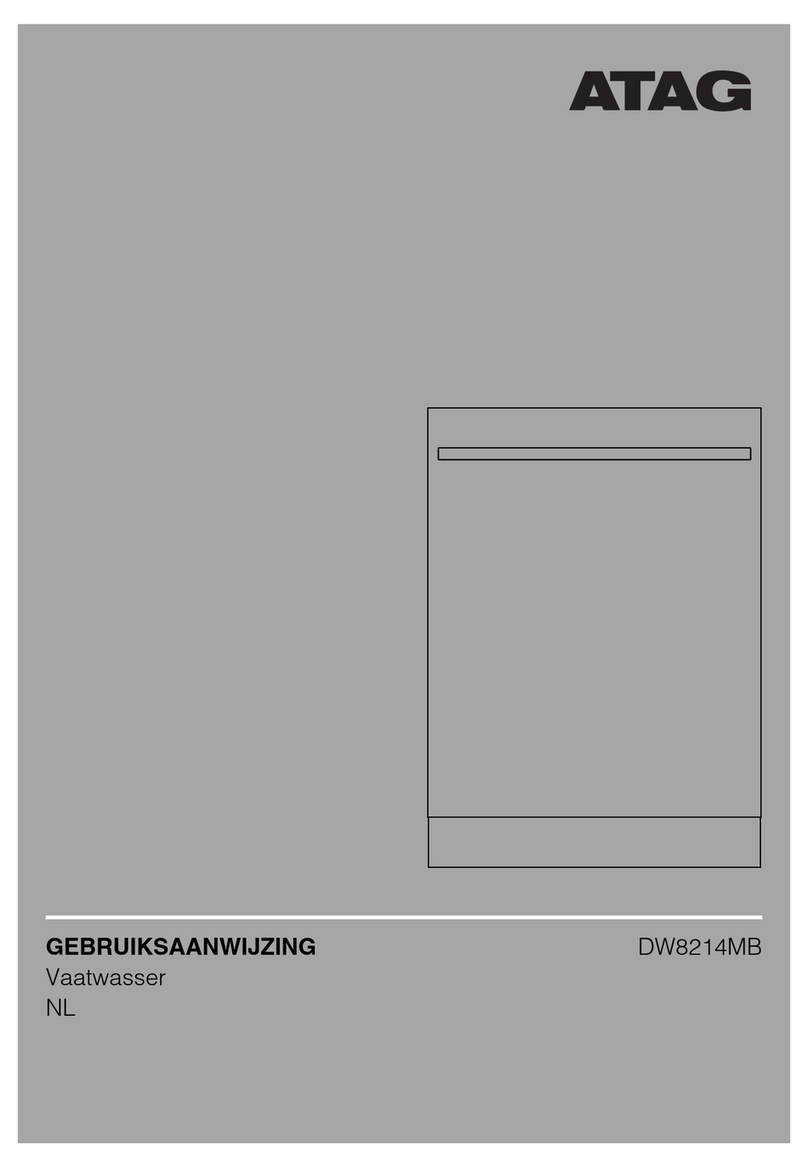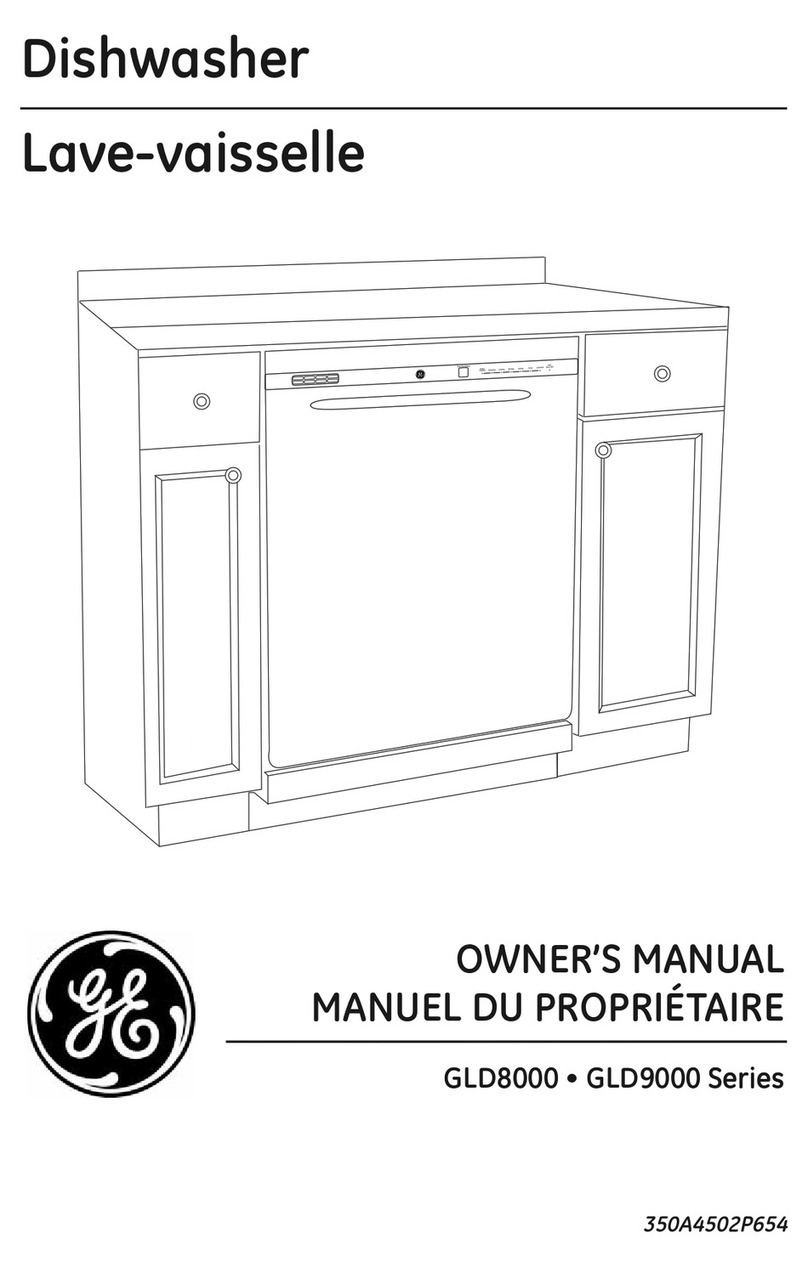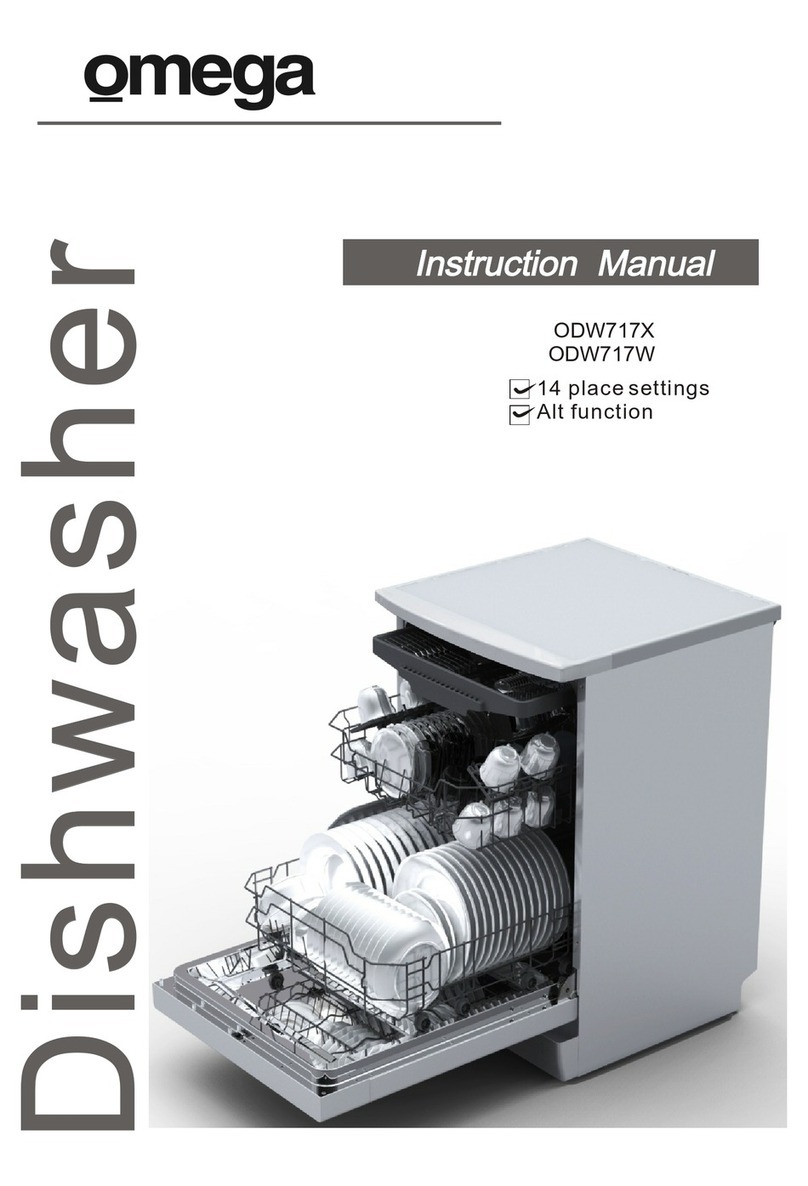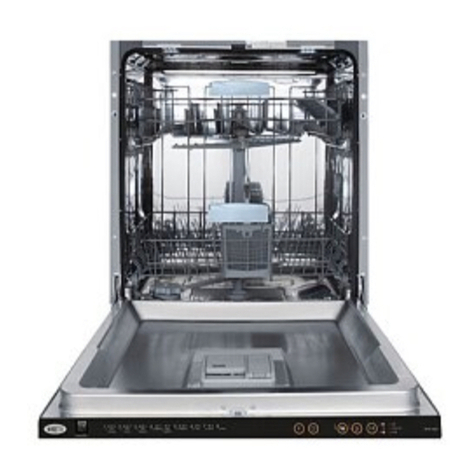
User instructions
6
run the soak program with half loads.
Options cannot be used with the soak program.
Dry assist is activated automatically if the selected program is compatible with the
* Standard programme under
. The
option must
See information sheet provided
**** Reference program for laboratories: Detergent:
in the
+
in
: see photo in “Using the baskets”.
(1) Programconsumption and duration figures havebeenmeasured in accordance
with the EN 50242 standard. Values may vary depending on intake water and
room temperatures and the type and quantity of dishes loaded.
1 or 2 cold rinses depending on the
(3) DRY ASSIST option selected (default)/not selected
REFERENCES for the ENERGY LABEL supplied with the dishwasher:
- Annual energy consumption is based on 280 standard wash cycles withcold
water and consumption of low-energy operating modes. Actual consumption
depends on the way in which the appliance is used.
- Water consumption is based on 280 standard wash cycles. Actual
consumption depends on the way in which the appliance is used.
- Information refers to the EN 50242 STANDARD programme (identified in the
programmes table), which is the most effective in terms of combined energy
and water consumption. The programme is recommended for dishes with a
normal level of dirt.
- Drying efficiency class on a scale from “G” (minimum efficiency) to “A”
(maximum efficiency).
Notice for testing institutes
Testing institutes are provided with guidelines for
comparative tests (e.g. according to EN60436).
If the form for the testing institutes is missing from
the documentation, please request the guidelines
by contacting us at the following e-mail address:
dishwasher@test-domestic-appliances.com
When making a request, please specify the model
(MOD) and the serial number (S/N) indicated on the
plate on the side of the door.
